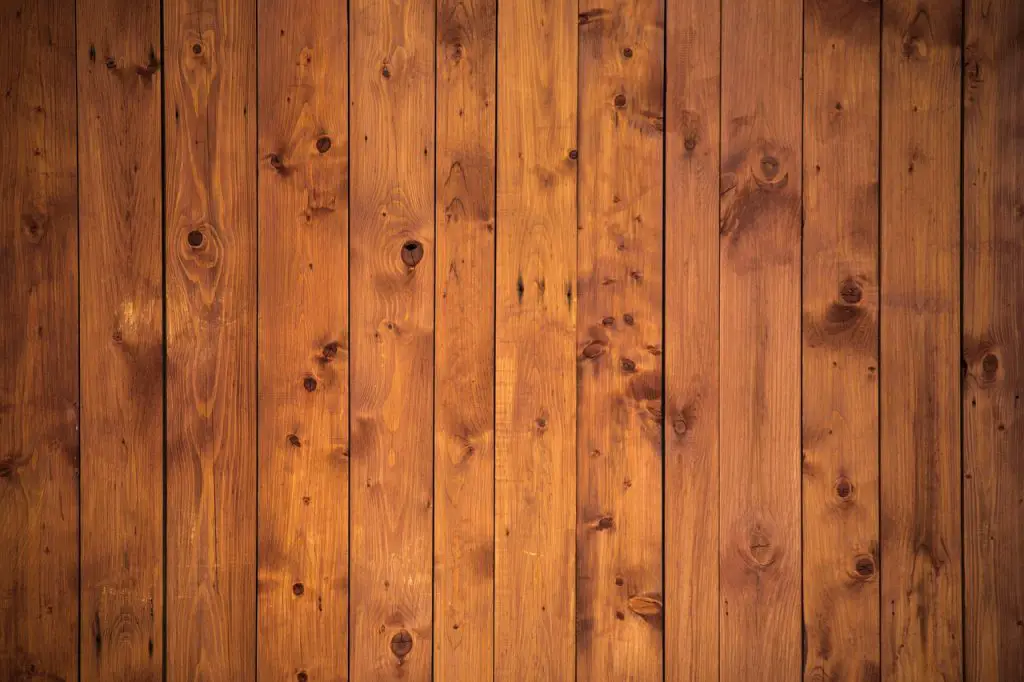
Here’s how to quiet creaky wood floors.
Living in a house that is built primarily by wood gives you so many benefits that you can’t experience with the concrete house.
A wooden house is colder even during summer, unlike concrete that intensifies heat in hotter months.
These are just a few benefits of living in a wooden house. But the wooden house also has some disadvantages as the house become older.
One of the most common problems is squeaking floors. This commonly happens in an older wooden house.
The most common reason behind this is the loosening of nails and hinges. If you experience living in an old house, you know what I am talking about here.
Although there are tremendous benefits you can enjoy living in old wooden houses, you can’t ignore those squeaking sound, especially in the night.
When I was a kid, I used to believe that the creaky house was a haunted one. It was a really distracting and horrific experience.
Today, I don’t believe in those horror stories anymore. But the creaky sound still haunts me. Some people, think that this problem has no feasible solution.
The truth is, creaky wood floors are easy to fix. It does not need some degree of expertise to solve the problem. You don’t even need a professional to do the job.
The very purpose of this guide is to give ideas about how to quiet creaky wood floors on your own. Trust me, it is easier than you think.
Below I will share with you a few simple steps you can use to quiet creaky wood floors in your house.
But before discussing the basic steps, let me explain why wood floors become creaky overtime. Understanding the cause of the problem makes it easier for you to fix it.
Table of Contents
Why do Wood Floors become Creaky?
Wood floors are constructed using a hoist and floorboards. The hoists hold the floorboards in place using nails or other construction materials.
Unfortunately, as time passes by, the nails lose their grasp resulting in gap formation between the hoists and the floorboards. Now you have a creaking wood floor.
Another possible source of the creaky sound is the floorboards rubbing one another. This happens when the nails are rusting.
Tips on How to Quiet Creaky Wood Floors
As I promised above, there are many ways you can quiet creaky wood floors. All you need to do is find the source of the disturbing squeaky sound.
Technically, there are three ways you can fix the creaky wood floors. You can use the below the floor, above the floor approach, and lubrication.
Each strategy depends on the nature of the floor problem you want to fix. In some instances, only one of these methods works well.
However, if implemented correctly, these strategies are effective. Your main job is to figure out the best way you can curtail the problem with your creaky wood floor.
1. The Below the Floor Approach
This technique requires access to the space below the floor. The biggest hindrance to this technique is the size of the space.
The smaller space, the lower your chance to use this method. This is because, in this technique, you should crawl under the floor to apply some treatment.
Therefore, this method is perfect for suspended floors that have enough vertical spaces between the ground and the floor.
Before start fixing the creaky wood floor using this technique, you need to see to it that you already have everything you need.
The good news is that the materials you need for this project are available in your nearby hardware supply stores.
The common materials you need are wood shims and some construction adhesives. In addition, you might also need someone to help you along the process to carry out the project easily.
Aside from having the complete list of materials you need, another even more important thing to consider is your safety.
This is because the dimly lit areas of the house are often the place where the insects take refuge. So there is a high possibility that you’ll find spiders, rodents, or snakes there.
To keep you and others safe, wear safety shoes or clothes. Use a flashlight to see everything in your workspace.
Aside from insects and snakes, you also need to be mindful of dirt and dust. These airborne materials are harmful to your respiratory system.
After making sure the safety, it is time to decide either you or your helper will crawl under the floor. The first job is to identify the part of the floor that is squeaky.

The person that stays above should deliberately walk around the floor to identify the areas that produce the squeaky sound.
This allows the person under the floor to easily fix the sound-producing areas of the floor. Every gap that is found between the hoist and the floorboard should be marked for easy identification.
Then, the next step is to place the shim into the gap. Although this process is simple, you still need to be careful. Too much force will push the shim harder which in turn creates potential bigger gaps.
When this happens, the problem is not solved. Instead, you create another even worse problem. This commonly happens when working with an old floor. The floorboards are fragile and can be broken easily.
Sometimes though, using a shim is not application especially if the gaps are too small. Forcing the shim to insert in the gap will only break everything.
What you can do in this case is to use construction adhesive to fix the gap. All you need to do is to identify the squeaking area of the floor and apply the adhesive onto it.
This material is super durable and requires less effort. If you hit the right spot, the adhesive will do the rest of the job.
As soon as the adhesive dries, you should not hear the creaky wood floors anymore. This material takes at least a week to completely dry. It is important to let the floor untouched during the whole drying period.
2. Above the Floor Approach
Not all wood floors have enough space under them. If this is your case, it is impossible to apply the previous method.
The best option is to work from above the floor. This method does not require you to crawl under the floorboards.
However, this process needs more materials compared to the previous method. In most cases, what you need is Squeak No More Screw Kit (click here to see this product on Amazon).
These materials are available from the local hardware stores. But for ease, you can order them from Amazon.
Now that you already have the needed materials, you can now begin finding the squeak. This first step is critical. Remember that you will drive screws into the floorboard that causes the squeak. Doing it on the wrong floorboard will not solve the problem.
But if you find the exact spot of the floor, the Squeak No More Screw will do the rest. This material is designed to bind the floor and the hoist together securely.
If the Squeak No More Screws are not available, you can use the steel brads. These materials are great substitutes for the screws. Their main function is for wood flooring.
Whatever material you use the process is still the same. The first step to quiet creaky wood floors is finding the floorboard that creates the noise.
From there, use the available materials. It is easier if you have someone to help you throughout the process.
3. Get the Floorboards Lubricated
Sometimes the creaky wood floors happen when the floorboards rub each other. If this is the case, what you can do to quiet that creaky wood floors is to apply some type of lubrication.
The good news about this problem is that it is super easy to fix. You can do it alone. Again, the first step is to find the part of the floor that creates a sound as you step on it.
The best way to do it is to intentionally step on the hoist and walk along on it. Make sure that you step on every floorboard. If the rubbing floorboards are the source of the problem, you’ll find the problematic spot easily.
Then, choose your material for making creaky wood floors quiet. There are many solutions to this problem. You can use baby powder, talcum powder, or powdered graphite.
Any of these materials will work just fine. But what I like the most is baby powder. Aside from being inexpensive, it is also safe.
What you should do next is to put a good amount of baby powder between the rubbing floorboards. This should immediately quiet creaky wood floors.
Apart from the materials I mentioned above, you can also use the WD-40 spray (click here to the product on Amazon). This one is the ultimate solution to the problem as far as creaky wood floors go.
If you want the best and long-lasting solution to your creaky wood floors, then this can be your best option.
For instructions on how to apply this spray, I embedded a YouTube video (from The Master’s Craft Channel) that will guide you throughout the process.
One thing to keep in mind here is that this spray is flammable. So it is very important to exercise extra caution when working with this material.
Any of the three strategies mentioned above are effective. However, there are instances where none of these work. If that is the case after you implement the suggested techniques, it means that you have a worse problem.
If you still hear your floor squeaking despite what you’ve done, I highly suggest that you consult a professional. It may be that the wood floor is way older than you think. Old wooden floors are sometimes difficult to fix due to their stability issues.
As time goes by, wood becomes brittle and loses its durability. When this happens, the nail cannot hold the wood anymore. So the floor becomes creaky.
My Final Thoughts on How to Quiet Creaky Wood Floors?
If creaky wood floors haunt you every day, well you are not alone. In fact, I myself have the same exact experience with my old house a couple of years ago.
The reason why I shared this guide with you is that I want to help you fix the problem that most people find difficult.
But the truth is, fixing creaky wood floors is easier than most people think. All you need is a few materials and a little bit of confidence.
If you follow some of the tips I shared above, you should be able to carry out the job alone. Of course, you can find additional information from other sources. If this guide is not enough, you can read other sources online to help you fix the problem correctly.
Nonetheless, I hope that the techniques on how to quiet creaky wood floors I mentioned in this post will somehow help you.
For more information about reducing noise or sound, feel free to read my Soundproofing Guide.
